Study: omnichannel retailers still fine-tuning fulfillment operations
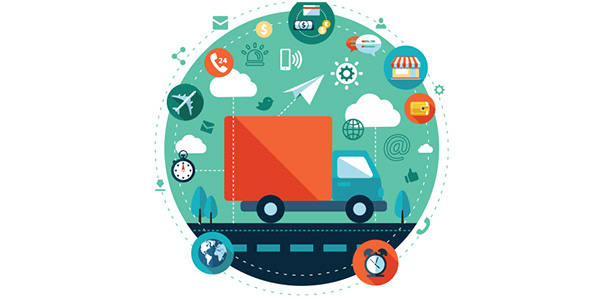
As they grapple with the logistics challenges that omnichannel brings, retailers continue to tweak their operations—whether that means adopting tried-and-true technologies or experimenting with drones.
By Ben Ames
Omnichannel commerce is one of the most powerful trends to sweep through the retail world in recent years.
In search of more efficient ways to control the flow of inventory, companies in nearly every corner of the retail industry are experimenting with various distribution strategies, whether it's filling both e-commerce and store replenishment orders from a single DC, running separate fulfillment operations, or filling online orders directly from brick-and-mortar store shelves.
But building a fast and profitable omnichannel fulfillment system can challenge every department in a company, from supply chain management to IT, marketing, store operations, and order fulfillment.
To get a better understanding of how companies are meeting the challenges of omnichannel distribution,DC Velocity and ARC Advisory Group, a management consulting firm in Dedham, Mass., teamed up to conduct our third annual survey on retail fulfillment practices. Respondents answered about 40 questions on their approaches to meeting current challenges in omnichannel commerce and their plans for the future.
The results show that companies are moving toward omnichannel operations with a goal of gaining customers and boosting revenue. Asked to list the top three reasons their company was participating in omnichannel commerce or building up those capabilities, survey respondents appeared to be squarely focused on revenue, saying they did it to increase sales (57 percent), increase market share (56 percent), and improve customer loyalty (55 percent).
Although our survey respondents clearly shared a common goal, that's where the commonality ended. The research results also showed that they used a wide variety of strategies and methods when it came to their omnichannel distribution practices.
THE MECHANICS OF OMNICHANNEL DISTRIBUTION
When we asked how they fulfilled e-commerce orders, the respondents' answers were all over the map: 63 percent said orders were fulfilled through a traditional DC that also handles e-commerce, 47 percent used a Web-only DC, 43 percent fulfilled orders from the store, and 36 percent said e-commerce orders were filled directly from the manufacturer or supplier. Respondents were allowed to select more than one response, and as the percentages indicate, a number of those companies are using multiple methods. (See Exhibit 1.)
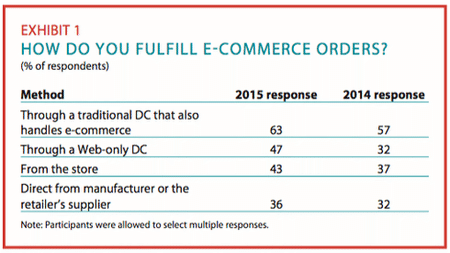
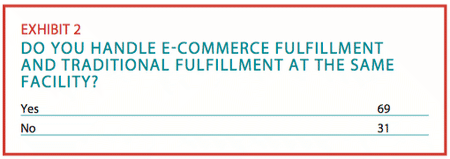
Likewise, asked whether they handled e-commerce fulfillment at the same facility where they conducted traditional fulfillment operations, 69 percent of survey respondents said yes, with 31 percent saying no. (See Exhibit 2.)
Some of the companies engaged in omnichannel distribution have opted to outsource the entire operation, hiring a third-party logistics service provider (3PL) to handle the fulfillment end of their e-commerce operations. We asked survey takers about their strategies, and found the answers were pretty evenly divided. The results showed that 68 percent relied on their own corporate (internally managed) distribution centers, while 50 percent used sites operated by their outsourcing partners. Those figures add up to more than 100 percent, indicating that some companies are taking a combined approach.
Within the warehouse, workers use a wide variety of methods to select items needed to fill these orders. Asked what technology order pickers use to fulfill orders from a traditional DC, respondents cited the following: warehouse management systems (WMS) with radio frequency (63 percent), voice recognition systems (24 percent), pick-to-light technology (24 percent), paper-based WMS (26 percent), and goods-to-person automation (18 percent).
Their managers also use a range of tools to support omnichannel commerce initiatives. When we asked respondents what technologies they used, the top three answers were high-end warehouse management systems (91 percent), demand management software (72 percent), and basic bar-code scanning on the store floor or in the backroom (61 percent). (See Exhibit 3.)
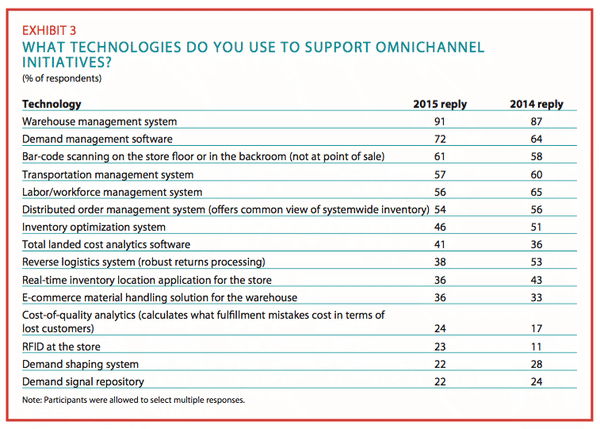
DELIVERING THE GOODS
A crucial link in any omnichannel fulfillment operation is the final step: getting e-commerce orders into customers' hands. Here, the options range from in-store pickup to home delivery. We drilled into current practices in this area as well as respondents' plans for the future. What we found was that e-commerce delivery is an area that's very much in flux.
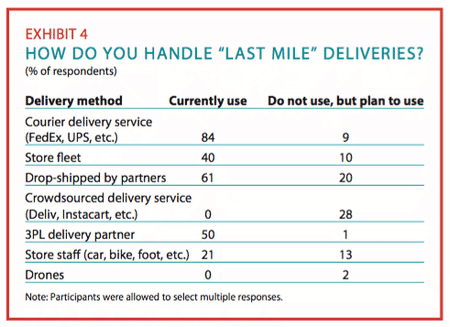
The responses to our first question—"How do you handle 'last mile' deliveries?"—contained few surprises. The most popular answers were courier delivery services such as FedEx and UPS (84 percent), drop shipping directly from partners' DCs (61 percent), a 3PL delivery partner (50 percent), and store fleet (40 percent). (See Exhibit 4.)
It was a different story altogether when it came to respondents' plans for the future. When we asked which shipping methods they "Do not use, but plan to use," their responses pointed in some interesting directions. For instance, they showed particular interest in crowdsourced delivery services such as Deliv or Instacart (0 percent use them today, 28 percent plan to use them); store staff delivery via car, bike, or foot (21 percent use them today, 13 percent plan to use them); and even drones (0 percent use them today, 2 percent plan to use them).
MEANWHILE, BACK AT THE STORE …
Of course, one of the more distinctive aspects of omnichannel commerce is that many purchases are never processed or shipped from warehouses at all, but are handled directly through retail stores.
To better understand how retail outlets fit into the picture, we asked survey respondents which fulfillment-related activities they carried out at their store locations. Sixty-eight percent of the respondents who fill at least some orders from stores said e-commerce orders were both picked and shipped from the store, while 64 percent said the orders were picked at the store and then held for customer pickup. A smaller percentage—47 percent—said they shipped e-commerce orders from a DC to the store for customer pickup.
That raised another issue: whether the retailers' employees picked the items from the stockroom or the showroom. The responses were pretty evenly divided, with 71 percent saying they picked orders from the back of the store and 64 percent from the front.
Finally, we dug even deeper, asking what methods stores used to communicate order information to the workers who picked those orders. The answers showed that stores lag well behind warehouses and DCs when it comes to the adoption of fulfillment technology, since the most popular reply was the paper-based method, with 56 percent. Trailing far behind were radio-frequency (RF) gun with textual display (26 percent), RF gun with graphical display (also 26 percent), and some other mobile device (15 percent).
THE ECONOMICS OF OMNICHANNEL
Despite the rapid growth of omnichannel commerce, our survey also revealed that e-commerce revenue has a long way to go before it eclipses brick-and-mortar sales income.
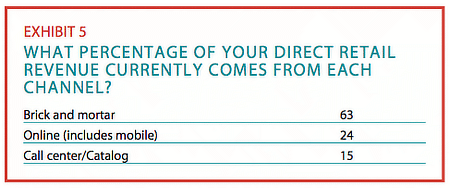
We asked survey respondxents what percentage of their direct retail revenue—revenue from items sold to consumers through their own sales platforms, as opposed to being moderated by a retail partner—currently came from each channel. The average for brick and mortar was 63 percent, far above online and mobile (24 percent), and call center and catalog (15 percent). (See Exhibit 5.)
Despite the modest revenue generated through online, mobile, call center, and catalog sales, a solid majority of respondents had sales operations up and running in every channel. When asked to list all the channels in which they currently receive direct retail orders, respondents cited online (84 percent), brick and mortar (76 percent), call center and catalog (57 percent), and mobile (46 percent).
Taken together, the survey results indicate that omnichannel retailing is here to stay, but that fulfillment practices remain in flux. In particular, our study points to changes ahead in the area of parcel delivery. Stay tuned for next year's survey, when we track the further progress of these trends that are revolutionizing the industry.
No comments:
Post a Comment